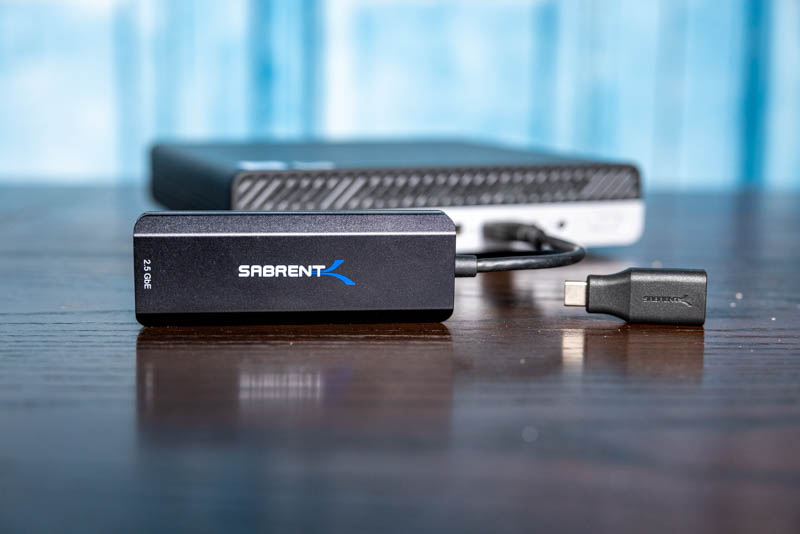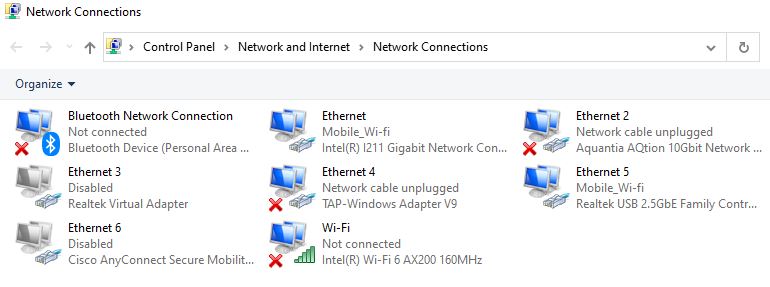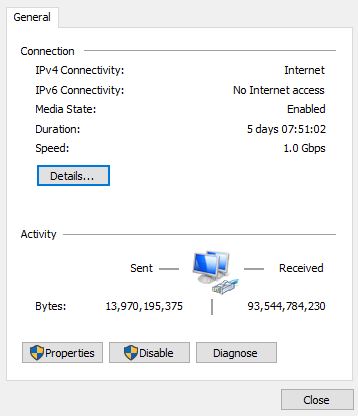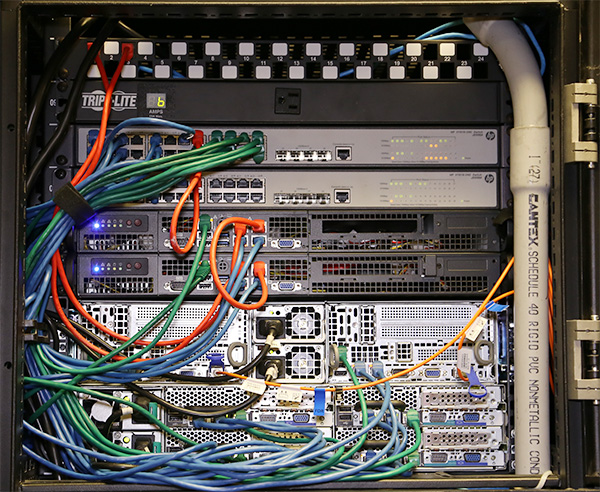Since we have reviewed two other popular USB 3.0 to 2.5GbE adapters this year, we figured we would review the third one we see commonly used, the Sabrent 2.5GbE USB network adapter or NT-S25G. A few months ago we reviewed the CableCreation USB 3 Type-A 2.5GbE Adapter and then the Plugable 2.5GbE USB-C and USB to Ethernet Adapter. In terms of the pricing, the Sabrent model is about $5 more than the CableCreation and $5 less than the Plugable so we wanted to see if it provides a middle ground in our review.
Sabrent USB-C and USB Type-A to 2.5GbE Ethernet Adapter Hardware Overview
On one side of the adapter, there is a USB Type-A port. What is unique here is that there is a Type-A to Type-C converter included. This is between the Plugable (USB Type-C standard with a Type-A converter on a lanyard) and the CableCreation unit that is Type-A only.

While we like the option to run Type-C, if there is a Type-A port available we generally think it is advisable to run in the Type-A port. This is a Gen1 USB 3 device so the port speed is only 5Gbps which is fine for a 2.5GbE NIC. We like the option to run USB Type-C, but with Project TinyMiniMicro nodes, as an example, we will use Type-A ports for a 2.5GbE adapter.

Far and away the one item that stands apart on the Sabrent unit is the chassis. Of the three, the Sabrent chassis is the heaviest, but that is because it is made of metal. This is not a cheap plastic case which we really like. The metal also helps with heat dissipation so it is functional as well.

The networking side is a 2.5GbE capable RJ45 port. You can plug a standard wired Ethernet cable in and this will work. This port also works at 100Mbit and 1GbE modes as well while supporting 802.3bz for 2.5GbE.
Sabrent 2.5GbE USB Network Adapter Setup
In Windows 10, the Sabrent 2.5GbE adapter was dead simple to set up. You plug in the adapter, and it connects with a DHCP address. It identifies as a Realtek 2.5GbE NIC and everything works. You can see here that it identifies as a “Realtek USB 2.5GbE” adapter because the Realtek RTL8156 chipset is the company’s 2.5GbE to USB single-chip solution. In our Syba 2.5 Gigabit Ethernet PCIe NIC Review, we saw the RTL8125 which is the 2.5GbE to PCIe version. Realtek makes variants of their adapters with built-in interface differentiation so one does not need a PCIe to USB bridge chip.

There are updated drivers on Realtek’s website compared to what is now shipping with Windows 10, and modern Linux distros, but having easy plug-and-play functionality is nice. We are showing Windows 10 here but Ubuntu 20.04 LTS works out of the box as well. You just need Kernel 5.x and support is built-in. OSX is also supported although we did not get to test on the Mac Mini M1 due to timing of this review. You can see that the card immediately connected to our multi-gig switch and negotiated at 2.5Gbps speeds.

We also tested at 1GbE speeds as well:

There are a number of features such as VLAN tagging and Jumbo Frames that one may want to change after setting up the NIC in the standard network adapter configuration, but everything was where we expected.
Sabrent NT-S25G NIC Performance
We tested the unit directly attached between two Windows 10 PCs going from the Sabrent USB 3.0 Type-A to 2.5GbE NIC to a TEG-25GECTX NIC. We also pushed these through a multi-gigabit switch and saw the same results within a 0.7% margin of error on both setups. We also used the speed setting to manually drop speeds from 2.5GbE to 1GbE.

Overall, we saw similar results when used in USB Type-A and Type-C ports. It is also effectively tied with the CableCreation and Plugable units. That is unsurprising since this adapter uses the same chip as those two.
We will also note that we are using this directly connected to the motherboard, not using an external hub. Users will likely experience worse performance if they put this NIC on a busy USB 3.0 hub.
Sabrent USB 3.0 to 2.5GbE Adapter NIC Power Consumption
We could not find power consumption ranges listed for its NIC. We tested the NIC both in a direct attach 2.5Gbps connection using CAT5e near the edge of the 100-meter maximum run length. We also tested the solution on a short connection to the switch using CAT6. We measured the impact on an Intel Atom C3558 server because that platform has relatively stable clock speeds and a low platform power base so we could see the impact measured at the wall.
- Sabrent USB 3.0 to 2.5GbE Adapter NIC 300 feet / 91.44 meters: 1.8W
- Sabrent USB 3.0 to 2.5GbE Adapter NIC to Switch 10 feet / 3.05 meters: 1.3W
This is a very minimal impact for these units to add 2.5GbE. For many systems, getting a 2.5x performance bump for tens of dollars and without having to open a chassis is a good deal at under 2W of operating costs.
Final Words
The USB Type-A to Type-C adapter is a nice touch along with the metal casing seems like it is worth around $5 more than the CableCreation 2.5GbE adapter unless one is on an extreme budget. Likewise, with a nicer chassis than the Plugable unit, and a $5 cost savings, we think the Sabrent NT-S25G is a better value than that option. We also like that Sabrent uses Type-A for this adapter. On a 10GbE adapter, we may prefer a Type-C port being used as standard, but for 2.5GbE, usually, Gen1 USB 3 Type-A ports are more plentiful so we like this design choice.

It would have been nice if Sabrent had a lanyard to keep the Type-C adapter affixed to the unit. Overall, unless one needs the extreme budget of the CableCreation 2.5GbE adapter that sacrifices build quality and Type-C for a few dollar savings, the Sabrent NT-S25G is our top choice in this USB to 2.5GbE segment.





As always, none of this matters if Multi-GbE or 10GbE switches aren’t readily available at affordable prices.
@James Smith, take a look at the Mikrotik reviews on STH. Not sure they support 2.5 GE, but definitely 10 GE and faster. All extremely affordable.
Thank You for a solid review & recommendation for these Realtek RT8156 based 2.5gb adapters. …Do you plan to expand into 5gb ehternet-usb reviews too? Just a suggestion ;)
SF – Rohit has two 5G adapters already drafted. I assume they will go live over the next two weeks.
Hopefully more manufacturers start selling consumer 2.5 switchs, in the $100 or lower price range. So far there is just one that’s hard to find. Most 10gb switches don’t support 2.5, just 100/1/10.
Thanks for the review! 2 Points:
1. Thanks in advance for the coming 5 Gbps adaptor reviews
2. What about FreeBSD/TrueNAS support? I am no expert on that OS family, but i often read to avoid Realtek NICs. Does this (still) apply? And apply too for those new 2,5/5 Gbps NICs?
Thanks!
I’ve asked once already, but I’ll ask again. Can you guys start posting the actual #’s on the graphs? having the bar somewhere between 100 and 150 is kinda useless. It would be nice if you posted the actual speeds.
Expanding on Evan’s comment above, testing 2.5 Gigabit adapters should probably have the test results also in bits.
Another USB Ethernet adapter review without a word about CPU utilization…
Do these work with pfsense and can it be used to tether an iphone’s hotspot to a ethernet port? Looking to expand those two use cases via usb ethernet adapter. Ty for the coverag
@newyork10023: you need to take a mikrotik with SFP+ ports, they haven’t switches with 2,5 or 5 GbE ports in RJ45. With the swicthes with SFP+ ports you need to buy the transceivers with RJ45 port but this one hasn’t energy efficient and ti’s way too expensive.
would be nice to see this tested and working on Linux, tried centos and the latest Ubuntu server. when installed on either the same happens with repeated disconnects and/or flooded dmesg logging depending on driver.
severely unstable either way.
I have 2 of these adapters and neither will give more than 1.3Gbps on either Windows or MacOS, even after updating drivers from those on Sabrent’s website.
Anyone knows if this adapter uses 8156 or 8156B?